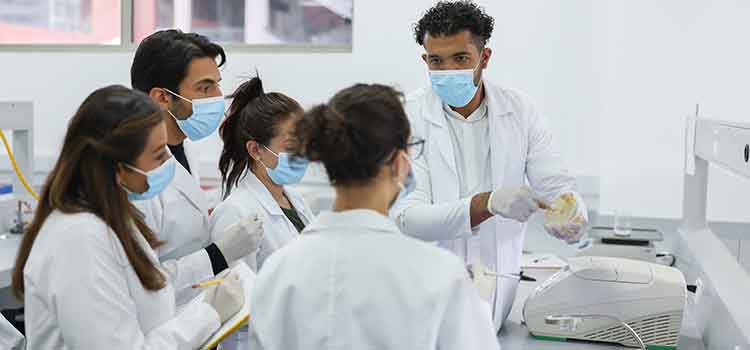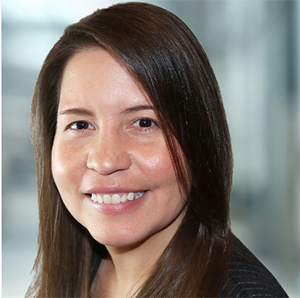In this Article

Biostatistician At a Glance
What Is a Biostatistician?
A biostatistician is a professional who utilizes mathematical and statistical methods to address inquiries in medicine, public health, biology, and related domains. Their expertise lies in analyzing data to support evidence-based decision-making in the medical field. By applying mathematical analysis, biostatisticians play a crucial role in helping advance research and improve healthcare outcomes.
“There’s a quote I love that says, ‘Every dataset has a story,'” says Aracelis Torres, PhD, MPH, vice president of quantitative sciences at Verana Health and an adjunct professor at Columbia University Graduate School of Arts and Sciences. “There’s an element of storytelling to data analysis, and biostatisticians tell that story to answer questions like, ‘What journey did this data take? What is going to be done with it? How will physicians use this information to help patients?'”
Biostatisticians use data to figure out how well new medications are working, what course a newly discovered disease might take, or if new policies implemented by a hospital are effective. This career might be an ideal fit for you if you’re interested in problem solving and data analysis. Now is a great time to get started, because you’ll have a lot of opportunities over the next decade. The U.S. Bureau of Labor Statistics (BLS) predicts an impressive 31.6% in roles through 2032. Why such a huge number? Medical data is everywhere, and more is being generated every day. Biostatistician are needed to put it all together.
“When we think about any single individual, there are many different ways they create data that is useful for healthcare,” Torres says. “Whether it’s having their vitals taken during a hospital stay, interacting with their physician during an exam and answering questions that get recorded in an EHR, or using a wearable technology device to track steps and heart rate, those pieces of data all come together through biostatisticians who glean meaningful insights to inform care.”
You’ll need to earn at least a master’s degree to take on most biostatistician roles, although a bachelor’s degree can get you started.
Steps to Becoming a Biostatistician
You’ll join a growing and fascinating field when you work as a biostatistician. To get started, you’ll need to complete your education and gain some experience. Steps to take in your career include:
Earn a bachelor’s degree in a related field.

You can’t earn a bachelor’s degree in biostatistics specifically, but you can study a related subject such as biology or statistics.
Gain some practical real-world experience.

It can help to gain some experience in the field. A role such as data analyst or research assistant can help you stand out when you apply to a master’s program.
Earn your master’s degree in public health or a related field.

You’ll need a master’s degree to pursue most biostatistician roles. You can earn your master’s degree in public health, biostatistics, or a closely related public health specialty such as epidemiology.
Consider pursuing a PhD.

A PhD can help you gain leadership and research roles in biostatistics. It’s a great degree path for people who want to plan and design their own research or who are interested in teaching.
What Do Biostatisticians Do?
Biostatisticians take on the responsibility of analyzing medical data to look for specific effects or properties. They play a vital role in healthcare without any patient interaction. This can make it a great fit for people who are drawn to the healthcare field but aren’t interested in the clinical aspects. You’ll need strong organizational, analytical, and communication skills to succeed in this role.
On the job, biostatisticians might study the data for patients who have all contracted a specific virus or bacteria to look for patterns. They might also analyze all the data coming back from the trial of a new prescription drug to evaluate how effective the drug is. Biostatisticians who work for environmental or government agencies might study the effects of an air pollutant or oil spill.
“Biostatisticians have to start from the lens of data empathy—taking time to understand where data is coming from and what processing has been done on the data before running analyses,” says Torres. “There may be aspects of where that data is coming from, who is generating it, and how it’s being generated that may play a role in what the analysis reveals.”
Once the data is analyzed, the biostatistician’s next step is to make their analysis understandable to the people who will be reading it.
“Biostatisticians weigh the pros and cons of different statistical techniques and the types of conclusions that can be made, and then ensure those conclusions are relevant to and understandable for a variety of audiences,” Torres says. “You can generate really fancy results, but if no one can understand what it means or what to do with them, there’s little to no impact.”
Organizations that Employ Biostatisticians
A Day in the Life of a Biostatistician
As is the case with many healthcare careers, it’s hard to predict a typical day. Even with a more office-based role such as biostatistician, your day will depend on the project you’re currently working on. Torres says that while your days can vary, you can count on interacting with data.
“There is rarely a typical day for a biostatistician, but a core component is some type of interface with datasets. This can mean sitting down at the computer to work on cleaning the data, preparing data for analysis, running an analysis on the dataset, or talking with other collaborators about study design and goals,” Torres says.
Educational Requirements
A master’s degree is considered the minimum for most biostatistician roles, although you might be able to find some jobs with a bachelor’s degree. Experience in the field can go a long way toward helping you achieve a biostatistician role.
“The degree choice for biostatistics depends on what you want to do in the field. There’s a benefit to having more structured learning, especially if you want to go into academia,” says Torres. “In that case, a master’s degree, a PhD, and even postdoctoral work would be useful. But real-world experience also provides a ton of value.”
A PhD can help you take on a leadership role and advance your career even further, Torres says. No matter what degree path you choose, it’s important to look at the connections your program has and the projects with which the facility have been involved.
“Students considering their educational path to a career in biostatistics should understand what opportunities there are for internships, and the work that professors at an institution are involved in,” Torres says.
Bachelor’s Degree
You won’t find any undergraduate programs specifically geared to biostatistics. However, you can earn a bachelor’s degree in a related field such as biology or statistics. It’s important to make sure your program covers biology, research, and statistics. You’ll need those courses to look for work and to apply to master’s programs. Some schools might offer elective biostatistics courses on the undergraduate level, and it’s a great idea to take those if you can.
A bachelor’s degree will allow you to take on jobs such as research associate or data analyst. You can use these roles to gain experience. Your experience and your bachelor’s degree might allow you to transition to a biostatistician role later. Even if your experience doesn’t translate to a biostatistician role, it can make your application to a master’s program stand out and might put you ahead of the curve when it comes to your coursework.
Prerequisites
You’ll need a high school diploma, a solid GPA, and strong scores on your SAT or ACT to gain admission to a bachelor’s degree program. It can help to have taken math and science courses in high school.
Courses
There is no set bachelor’s degree in this field. It can help to take courses in statistics, probability, biology, data analysis, and research.
Time to Complete
Four years
Extracurricular Requirements
Additional requirements will depend on your major and your school.
Master’s Degree
Pursuing a master’s degree is a smart choice for your biostatistician career. Having a Master of Public Health or a master’s degree in biostatistics, epidemiology, or statistics is what most employers want to see. These degrees will allow you to pursue an entry-level role as a biostatistician. From there, you can gain experience and move up in the field.
The choice of what master’s degree to earn is up to you and might depend on the school you choose. Make sure you pick a program with a strong focus on biostatistics, whether it’s in the name of your degree or not.
Prerequisites
You’ll need a bachelor’s degree in a related field that includes coursework in statistics, research, and biology. Many programs will ask that you’ve had at least two years of work experience in a related research field. You’ll need a strong GPA from your undergraduate program and might need solid GRE scores as well.
Courses
You’ll take courses in data analysis, bioanalysis, probability, linear models, calculus, public health, epidemiology, bioinformatics, project implementation, and biological research.
Time to Complete
3-5 years
Extracurricular Requirements
Any additional requirements will depend on your school and program but might include fieldwork or internship.
Doctorate
Earning a PhD in biostatistics or public health can allow you to gain leadership and project design roles in the field. You can work to design methods to analyze and solve complicated health problems using healthcare data. You’ll be able to design and conduct independent research products. You’ll also be able to teach biostatistics to other healthcare professionals.
Many PhD programs offer a way to pay for your education through fellowships, stipends, research assistantships, or teaching assistantships. This can be a great way to fund your education and gain additional experience.
Prerequisites
You’ll need a solid GPA from all previous education. Your prior coursework should be in biostatistics, public health, or a closely related field. College-level statistics and biology will be required. Many programs will also look for strong GRE scores and work experience in a related position.
Courses
You’ll take courses in biostatistical data analysis, project implementation, healthcare leadership, healthcare policymaking, statistical framework applications, research design, and more.
Time to Complete
2-6 years, depending on program
Extracurricular Requirements
Most PhD programs have a final project or thesis component. You’ll likely need to create, conduct, and analyze a research project that uses biostatistics principles as part of your requirements.
Certificates
Biostatistician certificates can help professionals who already work in closely related fields add specific biostatistical knowledge to their work. A biostatistician certificate program is normally open to people who already have a master’s or doctorate in a similar field. These programs can enrich understanding and help other professionals use biostatistical tools in their work. These certificates could be used for career advancement, career change, or simply to widen professional knowledge. Examples of professionals who might pursue a certificate include:
Most certificate programs can be completed in a year or less. You’ll need a master’s degree in a related area and related work experience for admission. Letters of recommendation and an essay stating your intent might also be required. Your certificate program will go over epidemiology as well as bio information concepts. You’ll discuss how to use statistical models to analyze these topics and reach conclusions.
Can I Get My Degree Online?
You can generally earn a biostatistics or public health degree online. This can be a great way to earn your degree on your own time or while you’re working, however, some programs might have a fieldwork or internship component. These components are designed to help you gain the hands-on experience you’ll need to help you succeed in your biostatistician career.
Online programs that require this sort of experience will help match you with clinical sites in your area. Ask about any internship requirements during your admissions process.
Biostatistician Salary
The BLS groups biostatisticians with mathematicians and statisticians. The median salary of these employees is $104,110, according to the agency. Your salary will depend on your experience, education, employer, and where you live. One huge factor in your salary is the city in which you live.
Metro Areas with the Highest Biostatistician Salaries
Job Outlook
The BLS projects 31.6% job growth for statisticians through 2032. By comparison, the average job growth for all jobs is 5%. Even in healthcare, where job outlooks are stronger than most other fields, this is an impressive rate of job growth. The average job growth for all healthcare jobs is 13%, according to the BLS.
Many factors can play a role in your salary, including your education and experience. So can location. Here’s a look at how salaries for health service managers stack up by state.
Employment
There are currently 31,370 statisticians of all kinds employed in the United States. The BLS projects that an additional 11,200 roles will be added by 2031. Cites and metropolitan areas with the highest employment include:
Biostatistician Job Growth
The role of data and technology is becoming increasingly important in all fields, including healthcare. Electronic records and digital data storage have become standard in healthcare in the past several years. In response, new roles to analyze this data are being created.
“In order to make sense of all this data that’s being collected on a daily basis, you need proper study design and proper methods to generate accurate conclusions from all that data,” says Torres. “The healthcare system needs professionals that can make sense of all the data with care and ensure proper interpretation. That’s where biostatisticians come in: to organize messy data and provide meaning and insight.”

Written and reported by:
Stephanie Srakocic
Contributing writer

With professional insight from:
Aracelis Torres, PhD, MPH
Vice President of Quantitative Sciences, Verana Health
Adjunct Professor, Columbia University Graduate School of Arts and Sciences